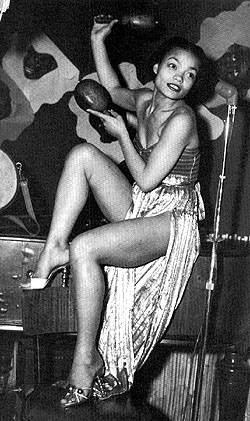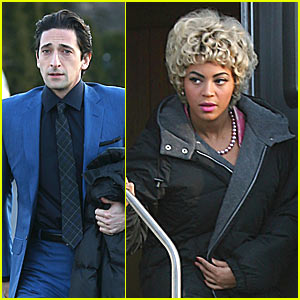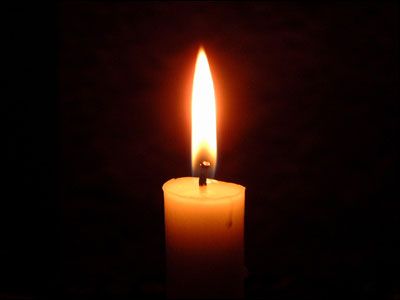 2008 is the year of the Black Queer!
2008 is the year of the Black Queer!
OK. That sounds really cheesy. But I was thinking about what my end of year blog entry would be, and while watching the finale of the Keyshia Cole reality show on BET, that Black Queer folks have been extremely visible in a myriad of ways over the last year.
Reality TV
Black queers have been most visible in the realm of reality TV. While the First Housewives of Atlanta was the third (and most watched) of the series on Bravo, it also had the most recurring Black gay men and transwomen and otherwise gender nonconforming folks of any of the three shows. Dwight Eubanks, ATL Celebrity Hairstylist and “gay husband” to NeNe, was on the show regularly, and seemed most often to be the voice of reason in the midst of all the drama. Similary, On Keyshia Cole’s show, her sister Neffe’s good friend and hairstylist Darrell was on the show regularly. Though their sexuality was never really discussed (though Dwight and NeNe had an interesting exchange about gender on the show), it was interesting to see such Black gay men (especially who were very gender noncomforming) on popular television. Also, Laverne Cox, the Black transwoman was a contestant on P. Diddy’s I Want to Work for Diddy show. She left about halfway through the show, and many things happened that were transphobic in nature, she wasn’t tragic and the show showed some level of growth in some other folks on the show who were clearly originally very uncomfortable with her presence.
Wendy Wiliams
So Wendy is not queer, but the queen of gossip radio’s 5 week pilot-run in several major cities brought Black gay culture to the mainstream in ways that the unsuspecting hetero may not realize. Her signature “How You Doin?” phrase has for years been a a way to signify Black queer culture with her radio listeners, as well as other phrases that she is beginning to popularize that come from Black gay culture like “Alright” and “The Girls Are Sitting” and “What’s the Tea?” Much like Beyonce’s continued use of Black queer culture for inspiration in videos like “Single Ladies” (the choreography is ripped from the pageant scene in Black southern queer bars and clubs), Wendy continues to bring Black gayness to the masses.
Noah’s Arc
Speaking of Tea, Noah’s Arc, the Black gay television series produced by LOGO (MTV Networks), made its way to the silver screen and opened to stunning per-seat sales at the box office in the 5 cities where it screened. This little Black gay movie became the buzz of the industry that never thought a film with Black gay characters not as buffoons (though it is a very soap-opera ish) as the leading characters could ever do well at the box office.
Politics
Not only did Keith Boykin and Jasmyne Cannick both become regularly called-upon pundits on CNN this year, mostly due to Paula Zahn’s now cancelled show, but because several political stories, Black LGBT became very central to of the framing of “gay issues” this year in a way we haven’t been. When Obama choose “ex-gay movement” mega church minister Donnie McClurkin to lead an event in South Carolina ahead of the primary, Black gays were most prominent in voicing our opposition. More recently, when white gays like sex columnist Dan Savage launched into many racist tirades to “Blame the Blacks” for the passage of Prop 8 in California, Black LGBT folk became somewhat prominent in the discussion. Race issues in the LGBT community are not new, but because of a number of popular Bloggers, writers and activists like Herndon Davis, Kai Wright, Jasmyne Cannick, Rod 2.0 and yours truly, there was an immediate and very public backlash from Black LGBT folks about Prop 8, and racism in the LGBT community. In fact when interviewing the back-peddling Savage, Steven Colbert even talked about Black gay people, specifically. In the 1970s-1990s, much of the response to racism in the community was documented by organizations and writers like Barbara Smith and Essex Hemphill, but it would be years before their works would be published and mass distributed. White queers who bought into the hype abot Black voters in California (I think) were quite taken aback by the Black queers who voiced our opposition to their racism in immediate writings, op-eds, blog posts, and TV/radio interviews.
Though there was lots of sad news this year in the murders of several people in our community as well. There were a couple victories- new trials for several of the New Jersey 4, and a recent high court decision in Uganda ruled in favor of lesbian activists that had been arrested and assaulted by police.
See you in 2009!
 Most people my age remember Eartha Kitt most fondly for her role as “Lady Eloise” in the early 1990s flick, Boomerang, for which she and Grace Jones, steal the show. I was never a huge Eartha fan, but she’s always been an inspiration to me. I am always fascinated by people who are subjected to various personal hardships-poverty, violence, — politicize those experiences, and re-make themselves, both because of and in spite of the histories that would normally dictate a different kind of life. It’s not to support the “pull yourself up by your bootstraps” bullshit, but for people who still understand the larger political circumstances that created the conditions they’d be forced to endure, what is it about them that makes them make very different choices, sometimes the most improbable choices?
Most people my age remember Eartha Kitt most fondly for her role as “Lady Eloise” in the early 1990s flick, Boomerang, for which she and Grace Jones, steal the show. I was never a huge Eartha fan, but she’s always been an inspiration to me. I am always fascinated by people who are subjected to various personal hardships-poverty, violence, — politicize those experiences, and re-make themselves, both because of and in spite of the histories that would normally dictate a different kind of life. It’s not to support the “pull yourself up by your bootstraps” bullshit, but for people who still understand the larger political circumstances that created the conditions they’d be forced to endure, what is it about them that makes them make very different choices, sometimes the most improbable choices?
 I grew up on blues music. My grandmother who just passed was a lover of BB King, Albert King, Bobby Blue Bland, and a number of other musicians. I have a subscription to eMusic.com, really for the sole purpose of having access to their amazing Blues and Jazz catalog-I can download 65 songs for about $15 bucks a month. I have read the auto/biographies of music legends Patti Labelle, Lena Horne, Ethel Waters, Billy Strayhorn, Chaka Khan, Nina Simone and Billie Holiday. And of course, Etta James’
I grew up on blues music. My grandmother who just passed was a lover of BB King, Albert King, Bobby Blue Bland, and a number of other musicians. I have a subscription to eMusic.com, really for the sole purpose of having access to their amazing Blues and Jazz catalog-I can download 65 songs for about $15 bucks a month. I have read the auto/biographies of music legends Patti Labelle, Lena Horne, Ethel Waters, Billy Strayhorn, Chaka Khan, Nina Simone and Billie Holiday. And of course, Etta James’  In the past several days there have been three stories that have been very disturbing to me, separately, and all as a result of the proximity in time-at least as news stories.
In the past several days there have been three stories that have been very disturbing to me, separately, and all as a result of the proximity in time-at least as news stories.